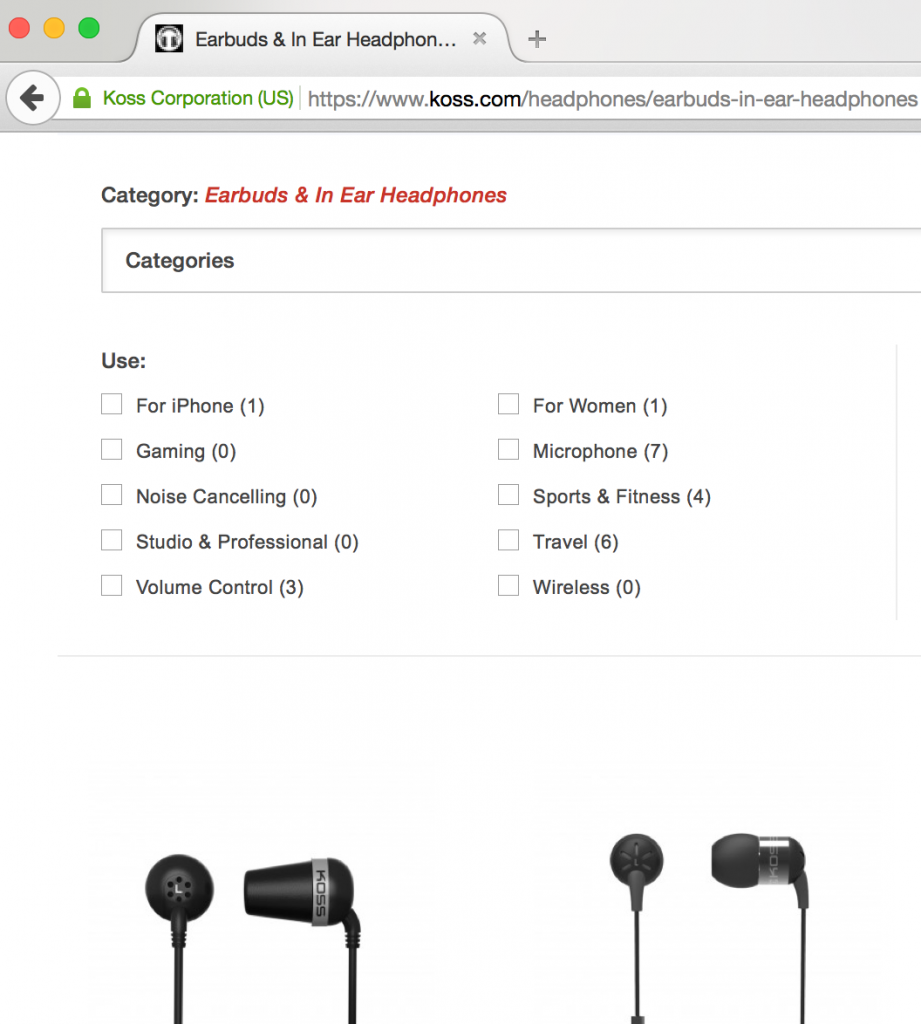Inc Magazine published an amazing piece by Jen Alsever in 2014 outlining how companies should market tech to women. In short: Houston, we have a pink problem!
I have no idea where this came from but there appears to be some prevailing logic among marketers (perhaps mostly the male decision makers? I digress…) that women will buy something as long as the item in question is pink. Perhaps the worst (and simultaneously best!) example of this is when BIC, the company that creates writing implements, decided to create “BIC for Her.” The marketing for this pen — which, by the way, was just like their other pens except pink on the outside — seemed to imply that women had been waiting eons and FINALLY the good folks at BIC created a pen for the ladies! Needless to say, Amazon reviewers have had a field day with this.
Today I discovered that KOSS, a brand that creates affordable headphones that I happen to really like, has a rather unfortunate filtering criteria on their shopping website.

Within the “earbuds” category, KOSS’ filtering criteria tells me that in the “For Women” category there is only one option. Who on earth decided that of the 20 earbuds listed on their shop, only one pair was appropriate for women? And furthermore, who decided that the “FitBuds” (which come in colors like Coral and Mint!) are exclusively for women? Do men not enjoy colorful earbuds? And, while I can acknowledge that maybe some women have smaller ears, surely having small ears / ear canals is not a problem exclusively faced by women. That said, I own earbuds from KOSS; the ones I own are not in the “For Women” category which begs the question: why even have a “For Women” category at all? How about filtering criteria based on scale (large buds / medium buds / small buds)? Or filtering criteria based on color (colorful / printed design / black)?
Not only is the KOSS approach lazy but it’s also insulting and demeaning to women. While brands probably do not intend for this to be the result, they are making assumptions about a market they are trying to reach. These assumptions are simply validating that they know very little about the market they are aiming for and have done very little to educate themselves. And I say it is lazy because, per Alsever’s second point in the Inc article, “women” is pretty broad as far as being a segment you are looking to target.
In the past, I came down on the Coach handbag company for this but it seems like their website has evolved! Their marketing used to infer that their beautiful leather totes and briefcases were only of interest to men. Their web shopping experience used to put all of these bags under the “Men” heading. Now, I’m happy to say that under “Women” they have a “Business Bag” category which includes many of the fine leather bags that are gender neutral. They also have a “For Everyone” header which is nice to see for gender identities that aren’t so black and white.
In short, I’ve reached out to KOSS on their Twitter account to implore them to fix their filtering. Given that I do really enjoy using their products, I hope they will consider making some efforts to avoid pink-washing their marketing.
